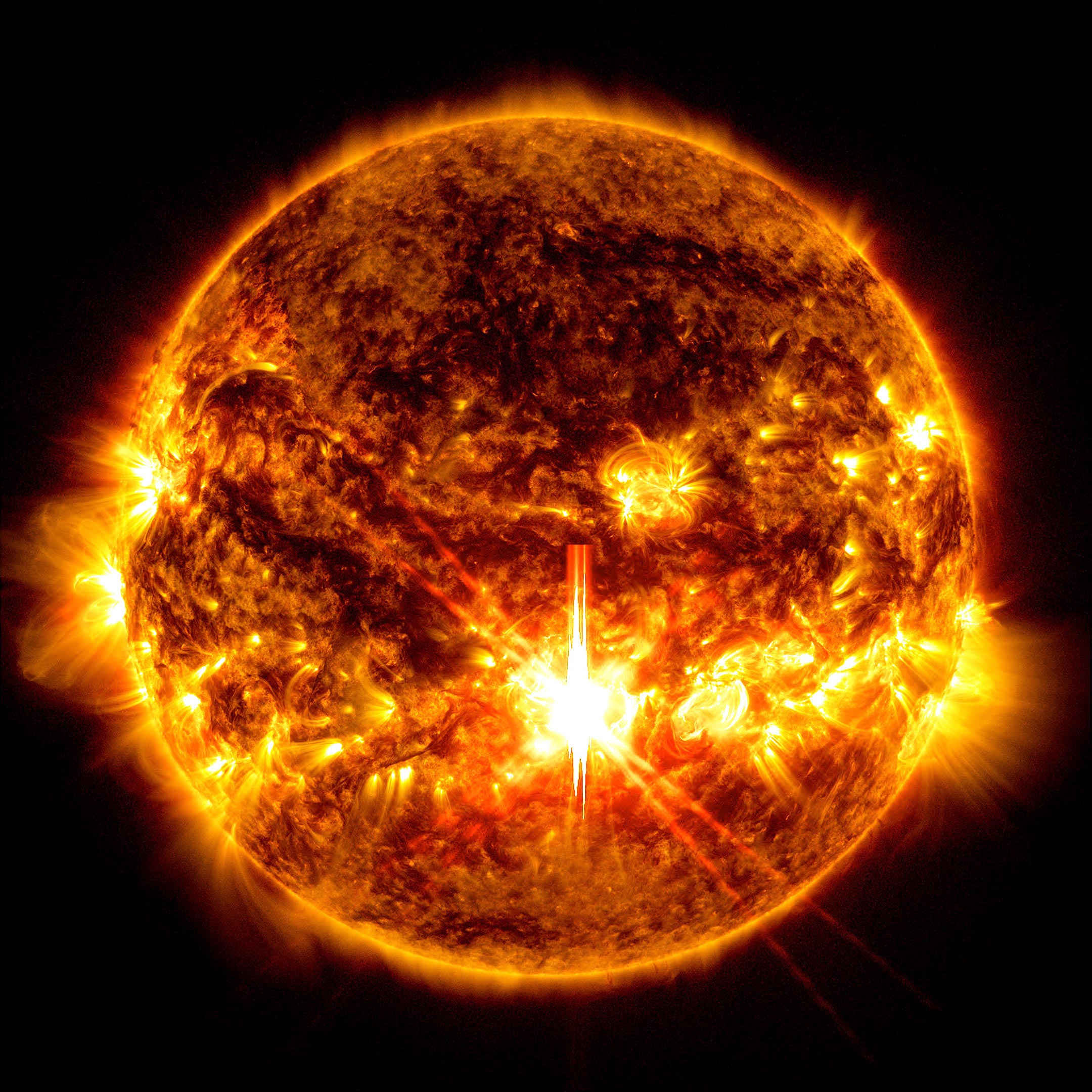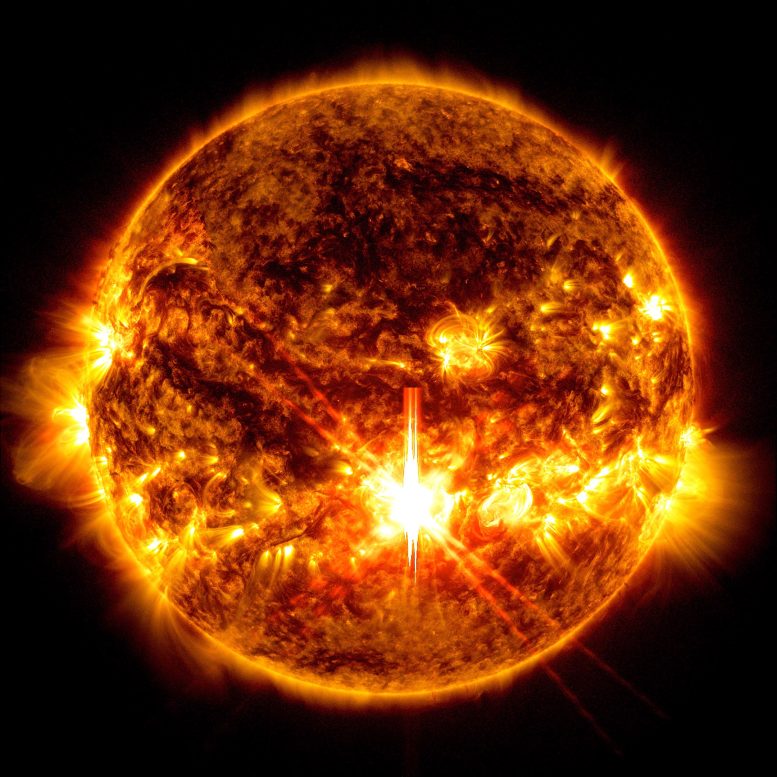

The Sun unleashed a powerful X9.0 solar flare, the most intense in over 7 years.
On October 3, 2024, the Sun emitted an exceptionally powerful X9.0 solar flare, peaking at 8:18 a.m. ET. This event, captured vividly by NASA’s Solar Dynamics Observatory, now stands as the most intense solar flare of Solar Cycle 25, which commenced in December 2019, eclipsing the previous high of X8.7 in May 2024.
In fact, it’s the most formidable flare observed in the last seven years, since the X11.9 flare on September 10, 2017.

Solar flares are intense bursts of radiation emanating from the release of magnetic energy associated with sunspots. They are one of the most powerful phenomena in our solar system, capable of releasing vast amounts of energy equivalent to millions of 100-megaton hydrogen bombs exploding at the same time.
Formation and Characteristics
Solar flares occur when the magnetic field lines near sunspots tangle, cross, or reorganize. This process can cause a sudden, rapid, and intense variation in brightness. The flare ejects clouds of electrons, ions, and atoms through the corona into space. These particles, when arriving at Earth, can interfere with magnetic fields, radio communications, and power grids.

Classification of Solar Flares
Solar flares are classified according to their brightness in the x-ray wavelengths observed by satellites. This classification consists of five categories:
- X-class Flares: These are the largest flares and are major events that can trigger planet-wide radio blackouts and long-lasting radiation storms. An X-class flare has a peak flux (measured in watts per square meter, W/m^2) of 0.0001 and above.
- M-class Flares: Flares of this magnitude can cause brief radio blackouts that affect Earth’s polar regions. Minor radiation storms might follow. The peak flux for M-class flares ranges from 0.00001 to 0.0001 W/m^2.
- C-class Flares: These are small with few noticeable consequences on Earth, having a peak flux between 0.000001 and 0.00001 W/m^2.
- B-class Flares: These are even smaller with a peak flux between 0.0000001 and 0.000001 W/m^2.
- A-class Flares: The smallest flares, measuring 0.00000001 to 0.0000001 W/m^2 in peak flux, and generally have no effect on Earth.
Each category above C-class has ten subdivisions (e.g., X2, X3), providing a finer scale to quantify the intensity. An X2 flare is twice as intense as an X1 flare, and so on. This detailed scaling helps scientists, satellite operators, and communications specialists manage the potential impacts on Earth and in orbit.
Impact on Earth
The arrival of the energetic particles from a solar flare can take from 15 minutes to several hours or days, depending on the flare’s intensity and the speed of the ejection. High-energy particles can degrade the performance and lifespan of satellites and other spacecraft. They can also pose risks to astronauts, particularly those outside the protection of Earth’s magnetic field. On the ground, intense flares can disrupt telecommunications and navigation systems and, in extreme cases, cause electric power outages.
Understanding and monitoring solar flares is crucial for mitigating their potential impacts on Earth and human technology, making space weather forecasting a vital field of research in astrophysics and geophysics.